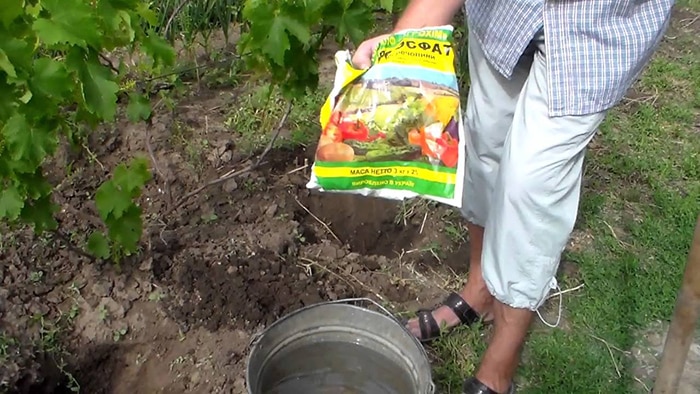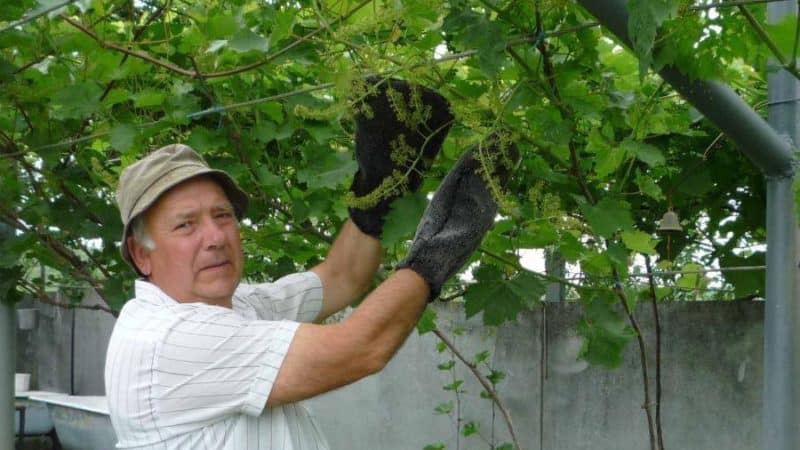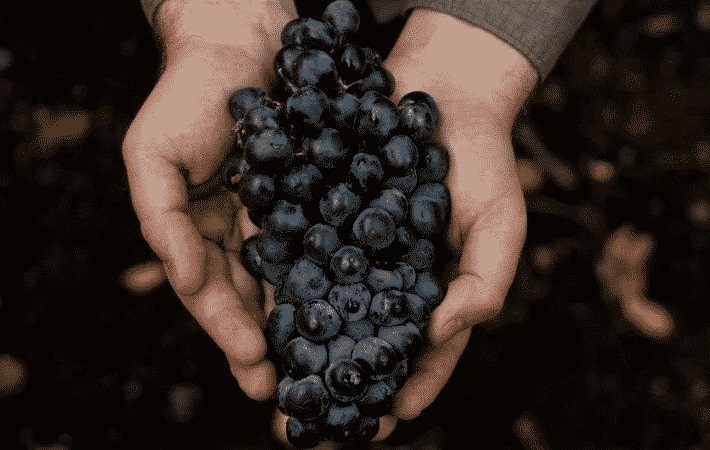Caring for grapes in summer: necessary work in the vineyard and advice from experienced winegrowers
In order for the grapes to bear fruit well every year and not to grow and turn into impenetrable thickets, one must not neglect caring for them in the summer. Throughout the season, procedures are carried out aimed at developing the crop and increasing productivity.
Features of summer grape care
In the summer, agrotechnical measures are carried out aimed at strengthening and developing the root system of the crop, the formation of shoots, and ripening of the crop..
The procedures differ from spring and autumn, since in the warm season the bushes intensively grow green mass and form ovaries, which turn into clusters with ripe berries. It is important that the grapes remain healthy and receive maximum nutrients and moisture, maintaining their potential for the next season.

Basic Rules
Methodicality and regularity of care are the key not only to obtaining a bountiful harvest, but also to the development of strong immunity by the crop.
Summer vineyard work includes:
- control over the abundance of leaves and clusters, the direction of growth of bushes;
- protection from pests and infections;
- pinching stepsons;
- removing weeds around bushes.
In June, the plants are cleaned and pinched to ensure effective flowering. By the end of the month, the harvest is formed, leaving the required number of bunches. In July and August continue pruning, removing excess leaves, shoots and roots. Watering is carried out regularly throughout the season, feeding, treatments against diseases and pests.
What conditions do grapes require in summer?
If the site has been correctly selected for the vineyard, in the summer the bushes will receive the right amount of sunlight and moisture. The heat-loving crop requires a special microclimate.
For good growth and high yields, it is desirable that climatic conditions meet the following requirements:
- average monthly temperature - not less than +16°C;
- soil temperature for better development of the root system - +28...+32°C;
- air humidity - not less than 20%, but not more than 80%.
Soil moisture varies in different regions and depends on the amount of precipitation, humidity and air temperature. This indicator is adjusted by watering.
How to care for grapes in summer for a good harvest
Even in a bad season, when the weather is unstable and the grapes are attacked by infections, experienced gardeners receive abundant harvests. They use time-tested methods and properly care for the bushes.
Watering

Grapes do not require frequent moisture. In areas with good soil, the procedure is carried out 1-2 times a month, but the soil is irrigated very abundantly so that the water penetrates to the deepest layers.
The minimum norm is 20 liters per m². During hot periods, moisten the soil more abundantly than usual.
Attention! In the second half of August, watering is reduced or stopped altogether for early varieties. This will prevent the berries from cracking.
Watering methods:
- superficial (along the rows);
- drainage (deep using buried pipes);
- drip (through a tube system).

The crop is watered until the berries soften and acquire the color characteristic of ripe fruits. If there is enough precipitation, the soil is not moistened at all.
Trimming
Fast-growing bushes spend a lot of energy on the growth of young shoots.To ensure that nutrients are not wasted, but go into the formation and maturation of the vine, pruning is carried out regularly in the summer.
When caring for grapevines, a balance is maintained between empty and fruitful shoots so that the load on the bush is even. Young shoots are broken out and pinched. First, empty branches are removed before and after flowering, and then the stepsons.
Summer pruning is usually carried out without the use of garden tools.
Top dressing

To increase the yield, fertilizers begin to be applied 1-2 weeks after the end of flowering and the first summer pruning.
The following mixtures are used:
- 10 g of potassium magnesia, 20 g of ammonium nitrate are diluted in 10 liters of water - this is the volume for applying to 1 bush;
- 1 part wood ash mix with 2 parts of water and infuse for several days, pour 1 liter of infusion diluted with water 1:3 under the bush;
- Before the ovaries appear, fertilize the leaves: 100 g of superphosphate and 50 g of potassium sulfate are diluted in 10 liters of water.
A week before the berries reach technical ripeness, a solution of 10 liters of water, 20 g of potassium fertilizer and 20 g of superphosphate is added to each bush.
A must for summer fertilizing — a sufficient amount of water so that nutrients easily penetrate into the soil to great depths.
Protection from diseases and pests

Prevention of infections in the summer should not be neglected, even if all the necessary procedures were carried out in the spring.
Processing schedule:
- in June - spraying with Topaz solution when the berries reach the size of a pea;
- in July - use of antifungal drugs “Quadris” or “Flint Star”;
- in August - prevention of the appearance of gray rot with a solution of potassium permanganate (7 g per 10 liters of water).
The ash solution is used periodically throughout the summer (1 kg of ash is infused in 10 liters of water). This safe remedy also nourishes the grapes.
Processing for a good harvest

To speed up the ripening of grapes in August, fertilize at the root. How to process grapes in cold summer so that there is a good harvest? One of the following is applied to each bush:
- 60 g superphosphate;
- 30 g of potassium sulfate;
- Kemira solution (1 tbsp per 10 liters of water).
To avoid infection of the fruit, be sure to remove cracked or rotten berries.
Debris of weak shoots, pinching
Empty and weak shoots and stepchildren negatively affect the plant, taking away some of the nutrients. Therefore, they are regularly removed. They're starting pruning immediately after flowering and continue all summer.
Reference. Stepchildren do not break off at the very base, since new shoots immediately appear. It is recommended to cut 2 cm from the first leaf.
If you neglect the procedure, the bushes grow densely, are not ventilated, sunlight has difficulty penetrating the vines, and the risk of rot increases.
Dry garter
Long shoots that are ripe and woody are tied up in several places. Their tips are especially carefully fixed so that heavy clusters do not pull the branches down. You cannot over-tighten the vines, so choose elastic garter material or leave a small gap between the shoot and the support.
The vines are tied up before long young shoots appear, so as not to damage the green shoots. The yield and further development of the bushes are positively affected by horizontal dressing or fixing the vine at an angle of 45°.
Normalization
Excess inflorescences are removed to increase yield and improve the taste of the fruit. The procedure is carried out before flowering, and the optimal load is formed on each vine.
With the help of properly carried out rationing, optimal accumulation of sugars in berries that ripen on time is achieved. If the load on the vine is too great, the fruits ripen late and remain sour.
As initial data, they rely on information about the variety (average bunch weight, shoot length). The optimal value is 1 m² of leaves per 1 kg of berries.
Pinching and chasing vines

At the beginning of summer, before the grapes bloom, they pinch, removing the upper parts of the young shoots. To do this, squeeze and break off the green part with your fingers, leaving about 10 cm before the beginning of the woody part of the vine. As a result, shoot growth stops, and nutrients are directed to the formation and strengthening of inflorescences.
Embossing resembles pinching, but is distinguished by a deeper removal of the tops of the shoots. It is carried out at the end of summer so that the berries ripen faster. During the procedure, the shoots are shortened to a length of up to 40 cm. At least 14 leaves are left on each branch.
It is not recommended to carry out minting ahead of schedule, as this will provoke intensive growth of stepsons and slow down the ripening of the crop.
Leaf thinning
Removing some of the leaves is called bleaching. The essence of the procedure is to provide the plant with sufficient access to air and sunlight. Remove leaves that block the rays of the sun from the clusters and interfere with the ventilation of the bushes.
It is not recommended to leave removed foliage on the soil at the roots. Over time, bacteria form in it and spread to the bush.
Nuances of summer care depending on the type/variety of grapes
In the first two years of life care is the same for all varieties. When the bush begins to form and bear fruit, an individual scheme is selected for each plant.
For early ripening grape varieties, all procedures are carried out 2-3 weeks earlier.
Depending on age

Young bushes take 4-5 years to form. During this period, wisely cut off the shootsto get a bush without thickening and overloading.
Reference. When caring for a young bush, more attention is paid to watering. The older the grapes, the more powerful their root system is, capable of extracting moisture from the deep layers of the soil.
When the grapes begin to bear fruit, the pruning methods change to standard ones: in the summer they carry out pinching, pinching, chasing and lightening.
Depending on the growing region
The best areas for growing grapes are the southern ones. However, there are varieties suitable for central Russia, the Urals and even Siberia. The method of summer care varies little by region.
Gardeners focus on the amount of precipitation when regulating watering and the intensity of solar radiation when pruning.
Useful tips from experienced winegrowers

To increase productivity, beginners follow the recommendations of experienced gardeners.
Summer care tips:
- high humidity negatively affects pollination, so watering is reduced if it rains in early summer;
- fertilizers with nitrogen are not used at the end of summer to avoid excessive growth of green mass;
- the berries on the upper clusters are usually smaller than those on the lower ones, so they are selected for removal during standardization;
- sandy and sandy loam soils require more abundant watering.
Bushes that do not receive proper care in the summer become weak, often die in the winter or bear fruit poorly the next season.
Conclusion
In addition to climatic conditions, the yield also depends on the correct summer care of the grapes.
Throughout the season, regular pruning is carried out, the vines are tied up, the leaves are thinned, the bushes are treated for diseases, watered and fed. Depending on the age, type and region of growth of the grapes, the nuances of care vary.